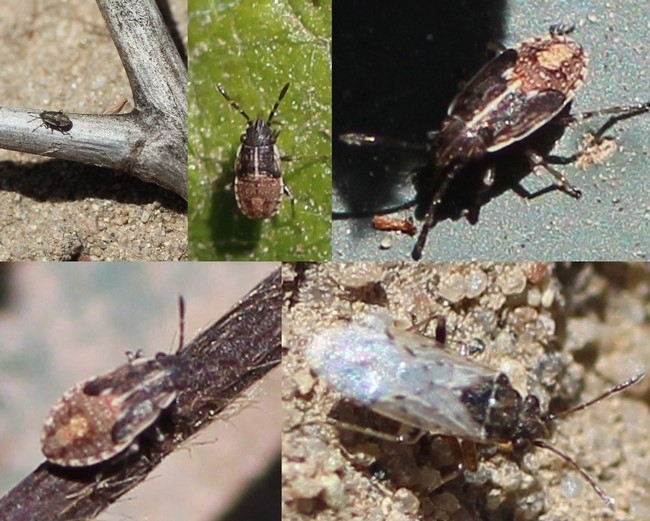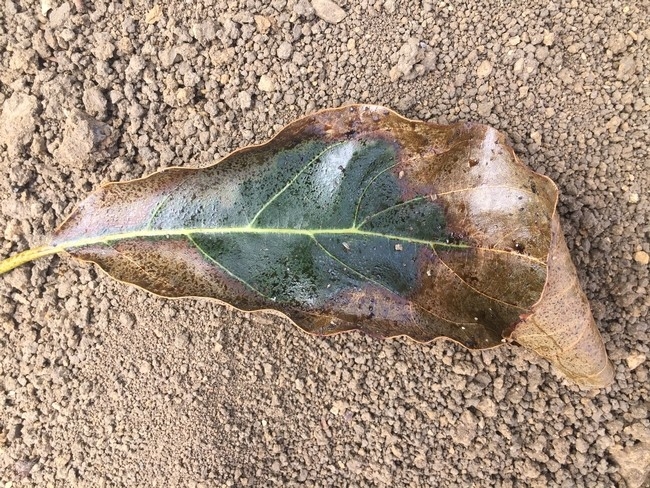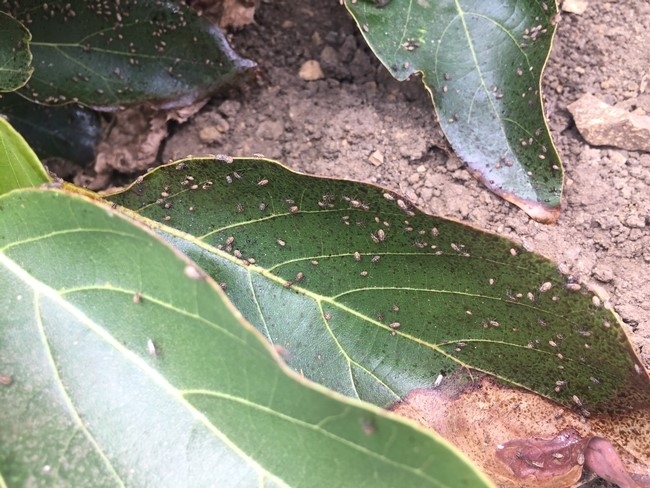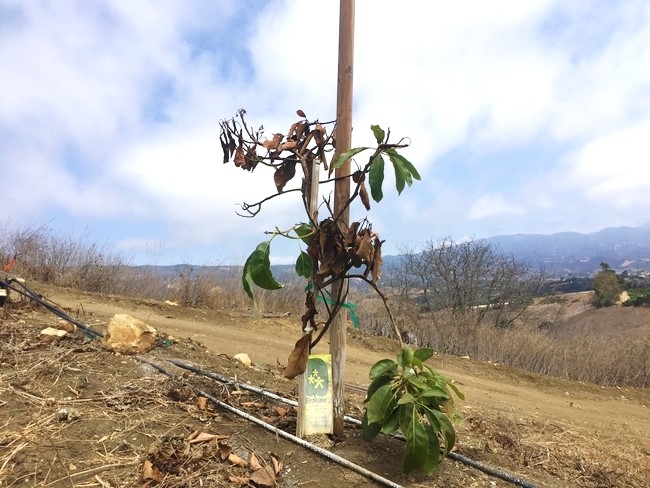The false chinch bug (FCB), Nysius raphanus (Hemiptera: Lygaeidae), is a pest of many plants. FCB is a generalist and has been found to be a problem in many cropping systems such as soybeans, quinoa, tobacco, cotton, broccoli and other Brassicaceae plants. FCB adults (above) is mostly light to dark gray, elongate, and about 0.12 inch (3 mm) long. Females lay eggs on host plants or in cracks in soil. The mostly pale gray nymphs have inconspicuous reddish to brown abdominal markings. FCB has 4-7 generations per year with all stages being potentially present throughout the year. All stages can be present throughout the year. They also can be found invading homes in the southwest. Their populations generally start in unmanaged fields with lots of weeds and are an issue for crops when they build up large numbers and move into the crops from the unmanaged, weedy fields.
Photos: Surrendra Dara
This year it's host of choice is young avocado plantings in Ventura County. False chinch bug occasionally causes severe injury on young trees by sucking sap from shoots and young stems. Infested shoots wither and die suddenly after attack, which typically occurs in May and June. Economic damage normally occurs in groves away from the coast only on young trees in border rows adjacent to uncultivated areas or grasslands. Otherwise healthy mature trees tolerate bug feeding.
Here are photos of damage to young avocado provided by Tom Roberts, Integrated Consulting Entomology.
To best manage FCB, a grower will need to catch it before it establishes and the populations explode. This is difficult because the pest will not reoccur every year on regular basis. From what has been seen in the field this year, FCB appears to prefer young avocado plantings and thus, a targeted approach is to monitor only in new plantings right as summer temperatures are rising. In paper in the journal, Phytoparasitica from 2006, the authors investigated what color sticky trap was best for monitoring and found that yellow worked best. Thus, passive monitoring with yellow sticky cards that are placed throughout the field and monitored weekly is a potential option. However, this approach can be expensive with the labor hours needed to properly process the sticky cards. A more practical approach is to sweep net weedy areas on the outside of avocado groves and adjacent unmanaged areas nearby weekly in search for the first signs of FCB.
In conventional avocado production, there is only one insecticide recommended for use against FCB. Malathion 8 at 16 oz/acre.



